
 |
Farndon Village Buildings - Village Inns and Public Houses
|
Now known as The Hare in Farndon
|
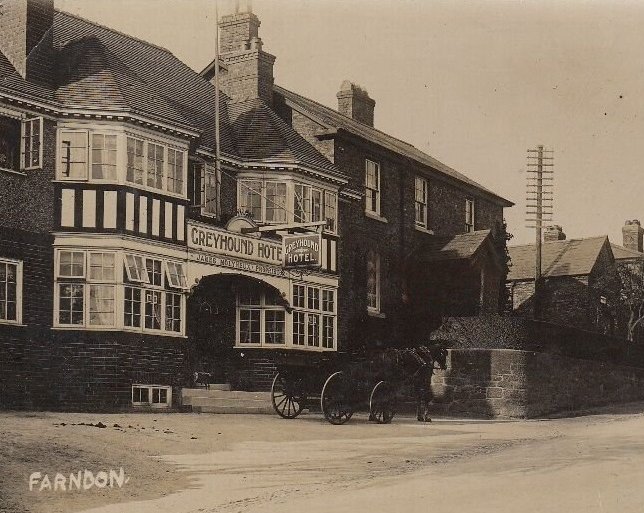
|
'The Masons Arms will lose its charms, The Raven it will fly, We'll turn the Greyhound upside down, And drink the Nags Head dry'. |
|
The Greyhound
In 1827, the licence was held by George Dutton, who also owned the pub as well as the land. He died in September 1837 and it was inherited by his son Richard, but as he was too young to run the pub, the licence was granted to Thomas Clarke, shown by the Tithe Award and census of 1841. Clarke held it until the arrival of Thomas Townsend (c.1851) who worked as a joiner, and farmer of the Greyhound land to supplement his income. He was followed by Abraham Thomas (1874), John Lea (1881) and Matthew Barrow (1891), by which time it was tied to Chester Northgate Brewery, and offered eight letting bedrooms. Drunken behaviour occurs in every hostelry at some time or another, but it was becoming so bad in Farndon that local asizzes were kept busy. One of the causes was the different licencing laws either side of the England/Wales border higlighted in this particular case;

Greyhound Inn, Cheshire Observer, 29 March 1890 There can be no doubt the hostelries today would welcome the trade from their neighbours over the bridge anytime they felt the need to swarm like bees across the border. The Fire of 1905
In 1905, the Fleet family suffered at the the hands of a devastating fire which destroyed The Greyhound.
The Reverend Owen's diaries recorded the events of that dreadful night:
'The tenants, Mrs. Fleet and her children only just escaping,
lost everything. The Farndon fire engine refused to work owing
to old age, but the Wrexham 'Steamer' saved adjoining houses;
had the gale been blowing as it had for some days, half the
village would have been burnt'.
The Lock Up is now a listed building. 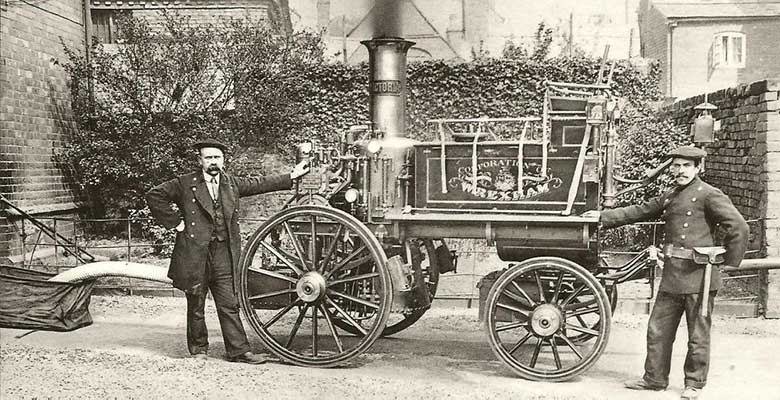 The Wrexham Engine
The Wrexham Engine
|
|
The stern warning indirectly conveyed in the jocular description which appeared a few weeks ago, of the despatch of the Farndon Fire Brigade to a fire has been unfortunately disregarded. Events succeed each other so rapidly in this up-to-date village that we have no time to concentrate our energies on any work which may not be required until tomorrow. We argue that as such-a-thing did not happen last week, it will therefore not happen this, and we pride ourselves upon our logic, for we know "summat in Farn." Moreover, as we are Christian, we do not believe in the Goddess Chance, and certainly did not expect to be served such a mean trick as the one played upon us in the early hours of Thursday morning. Just after four o'clock the alarm was given that the Greyhound Hotel was on fire. The proprietress (Mrs Fleet) was awakened by the smell of burning, and rising hurriedly she awakened the household and summoned the Fire Brigade. The members instantly responded to the call, and had their engine on the scene in a very creditable time. All their efforts were, however, nullified by the fact that the hose was so defective that it would not even carry the water as far as the nozzle. It was like the Irishman's pocket that would not hold money, it was so full of holes, leaks and rents. Meanwhile, the fire obtained the mastery, and for two hours raged furiously. There was a high wind blowing at the time right through the village, and along the main street there was carried a veritable stream of living fire, threatening to set alight the whole place. Sparks and balls of fire were falling on root and on stack, and the utmost vigilance and activity were required to keep the huge Dutch bays and the inflammable contents (in the centre of the village) from becoming ignited. It was a time of great anxiety, and had the wind veered but a few points nothing could have saved the village from destruction. The Wrexham Fire Brigade arrived just as the next house caught fire, but they speedily diminished the danger, and finally succeeded in completely extinguishing the flames. Unfortunately, the Greyhound Inn itself is completely gutted, and presents a terrible spectacle. The members of the house lost all their personal belongings, as well as their cherished possessions, while very little furniture was rescued. The origin of the fire is a mystery, and it seems to have obtained a firm hold before it was discovered. To some extent, the loss is covered by insurance. Great sympathy is felt in the village both for Mrs Fleet and her son, more especially as it is felt that had the Farndon engine been in working order their loss would not have been so great. It is to be hoped that something will now be done in the matter. As it stands, the brigade is worse than useless, for it leads people into a false security. The question to first settle is whether there shall be an engine at Farndon or not. If there is not sufficient public spirit in Holt and Farndon to keep the thing in good order, then why not sell the engine and openly admit the failure? We should know how we stood, and those of us who dread a fire could take what steps we might think best. At all events, we should cease to trust what has now become a public danger.
The opinion has been freely expressed in the village that had the engine been in proper working order the Greyhound could have been saved, and that but for the timely arrival of the engine from Wrexham a most terrible and devastating fire would have wrecked the village. The only apparent way to profit by this severe lesson is for the Parish Council to take the whole affair over. There cannot be a single person who would grumble at a rate for such an absolutely necessary object. We have been let off lightly compared with the village in Galway where the engine had been similarly neglected. A fire broke out in the night, and some four or five lives were lost. Perhaps if the inhabitants at a public meeting expressed their desire that the Parish Council would do something, we might make a beginning. Fires, like other misfortunes, do not as a rule come singly, and no time should therefore be lost.
|
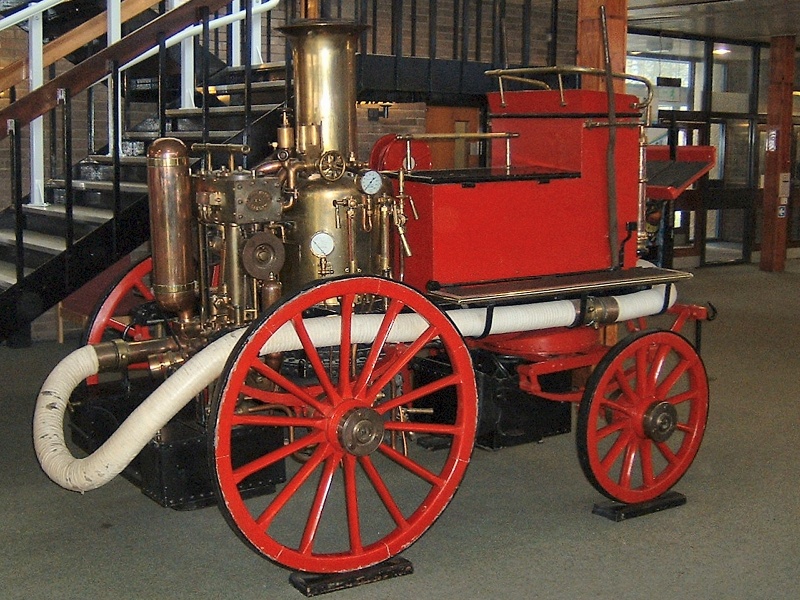 An example of a horse-drawn steam fire engine from the turn of the century.
An example of a horse-drawn steam fire engine from the turn of the century. 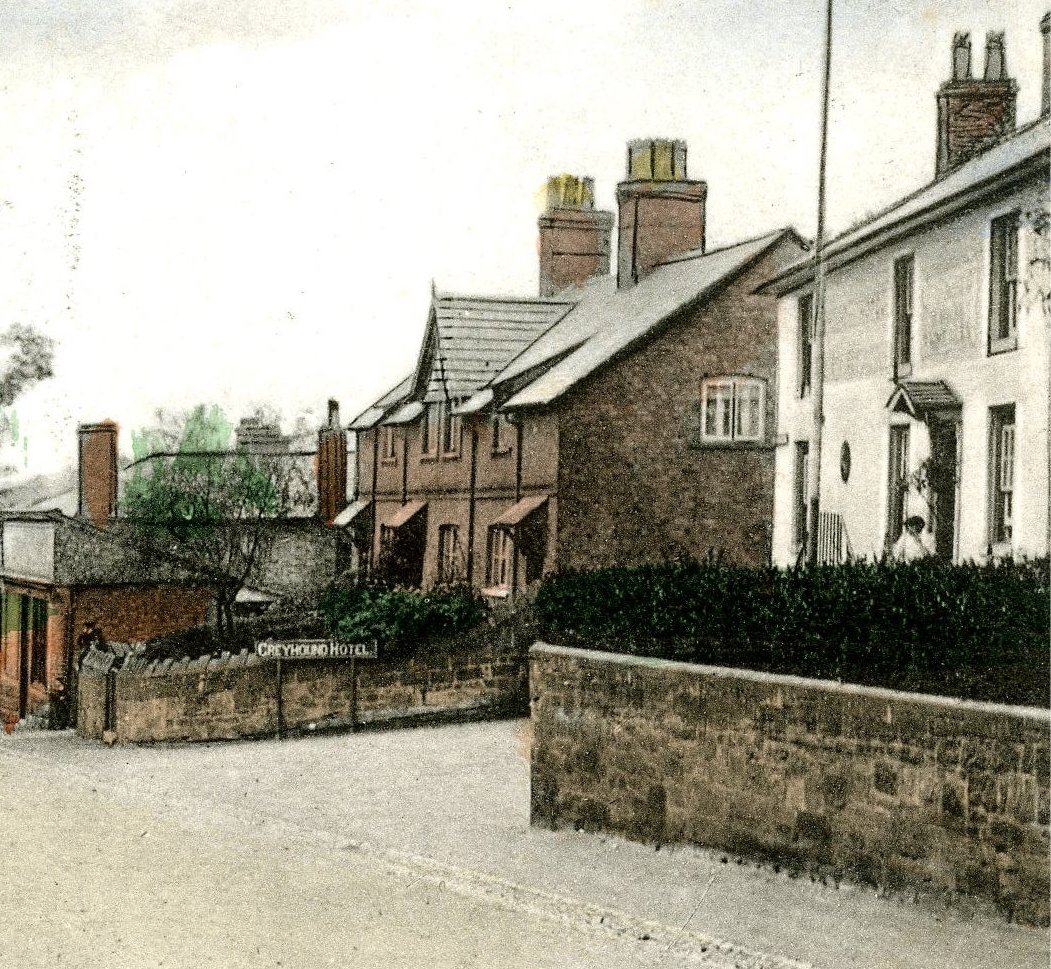 The nineteenth century Greyhound Hotel (the whitewashed building on the right).
The nineteenth century Greyhound Hotel (the whitewashed building on the right).
This was a double tragedy for licensee Elizabeth Fleet, as she had lost her husband John Fleet almost a year to the day on 8th January 1904. They had been married since 10 August 1892. Born in Ayr, Scotland, as Elizabeth Doughty, she was a dressmaker and a widow when she met John Fleet, having been married to Thomas Biker, an engine driver, with whom she had two young children in their new home in Farnworth, Bolton.
But now here she was in a village miles away from her own family, a widow for a second time, no husband or business to support her, and with four children, two from each marriage. It must have been devastating standing outside the burning building losing her livelihood, her possessions and any security for the future. At least they had got out alive.
By 1911 however, her fortunes had changed after she married for a third time, to Alfred Belsen, a licensed victualler, as together they were now running the tenancy of the Sun Inn, of Abbot Street, Wrexham. Even her son Walter Leslie Biker had returned to give his support, although he was soon away to war and married in 1915.
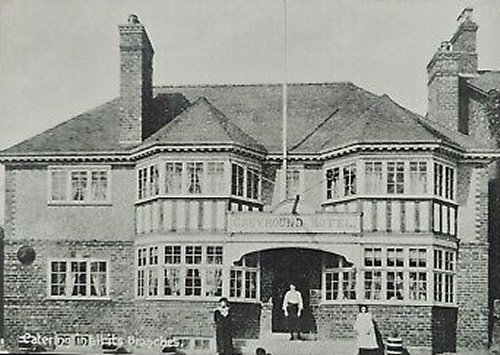 Meanwhile, the Greyhound had been rebuilt (the same building which still stands today), and the tenancy had passed to James Molyneux who had relocated with his family from Liverpool.
Their stay was a short one, as by 1914 the landlord was George Edward Chesterman. His tenancy coincided with the outbreak of war and the introduction of emergency measures by the government, under the Defence of the Realm Act (DORA). Powers were wide ranging; in addition to matters of homeland security and programmes to increase industrial and military production, opening hours for pubs were cut, beer was watered down - all designed to improve the work ethic. A 'non-treating order' was even introduced,to discourage patrons from buying rounds for fellow drinkers in an attempt to reduce consumption. The latter was taken very seriously and local watering holes came under scrutiny. So much so, that in Farndon, a couple of policemen working undercover, posed as anglers calling in to the High Street pubs for refreshment after a supposed day on the Dee. As a result of their visit, the licencee of the Greyhound was arrested and brought to court on 25 July 1916, for serving a patron with four bottles of beer for his pals in the back room of the pub. If they had bought them individually no law would have been broken, but the hapless landlord, Mr Chesterman, found himself up before the beak at Broxton Petty Sessions, prosecuted under the Liquor Control Board Order “for selling intoxicating liquor (beer) for consumption on the premises, such beer not being ordered and paid for by the persons so supplied”. The four customers who consumed the beer, all Wrexham men, were alongside him, also charged.
It would seem that the police were monitoring the situation following complaints from local residents. The men were drinking on a Sunday, which was a growing local issue, and even the local vicar had previously gone to court to try to have the licence for the Greyhound revoked, due to the frequent noise and unholy brawling in the High Street. This was often between local lads and men coming from across the bridge from Holt and Wrexham, as Welsh hostelries were banned from opening on Sundays – suggesting the prosecution could well have been a
localised issue beyond that of the wartime restrictions. However, the case was dismissed on the grounds of conflicting evidence, but it did reveal – according to the licencee - the difficulties of running a public house in Farndon. This was a regular Sunday in the summer, he told the court, where the pub was packed out - he would be dealing with over 300 customers, plus 50 in the coffee room and a
tea room upstairs. There was also a tent at the rear grounds to cater for the overflow. A
problem the present incumbents would doubtless relish in these uncertain times.
Meanwhile, the Greyhound had been rebuilt (the same building which still stands today), and the tenancy had passed to James Molyneux who had relocated with his family from Liverpool.
Their stay was a short one, as by 1914 the landlord was George Edward Chesterman. His tenancy coincided with the outbreak of war and the introduction of emergency measures by the government, under the Defence of the Realm Act (DORA). Powers were wide ranging; in addition to matters of homeland security and programmes to increase industrial and military production, opening hours for pubs were cut, beer was watered down - all designed to improve the work ethic. A 'non-treating order' was even introduced,to discourage patrons from buying rounds for fellow drinkers in an attempt to reduce consumption. The latter was taken very seriously and local watering holes came under scrutiny. So much so, that in Farndon, a couple of policemen working undercover, posed as anglers calling in to the High Street pubs for refreshment after a supposed day on the Dee. As a result of their visit, the licencee of the Greyhound was arrested and brought to court on 25 July 1916, for serving a patron with four bottles of beer for his pals in the back room of the pub. If they had bought them individually no law would have been broken, but the hapless landlord, Mr Chesterman, found himself up before the beak at Broxton Petty Sessions, prosecuted under the Liquor Control Board Order “for selling intoxicating liquor (beer) for consumption on the premises, such beer not being ordered and paid for by the persons so supplied”. The four customers who consumed the beer, all Wrexham men, were alongside him, also charged.
It would seem that the police were monitoring the situation following complaints from local residents. The men were drinking on a Sunday, which was a growing local issue, and even the local vicar had previously gone to court to try to have the licence for the Greyhound revoked, due to the frequent noise and unholy brawling in the High Street. This was often between local lads and men coming from across the bridge from Holt and Wrexham, as Welsh hostelries were banned from opening on Sundays – suggesting the prosecution could well have been a
localised issue beyond that of the wartime restrictions. However, the case was dismissed on the grounds of conflicting evidence, but it did reveal – according to the licencee - the difficulties of running a public house in Farndon. This was a regular Sunday in the summer, he told the court, where the pub was packed out - he would be dealing with over 300 customers, plus 50 in the coffee room and a
tea room upstairs. There was also a tent at the rear grounds to cater for the overflow. A
problem the present incumbents would doubtless relish in these uncertain times.
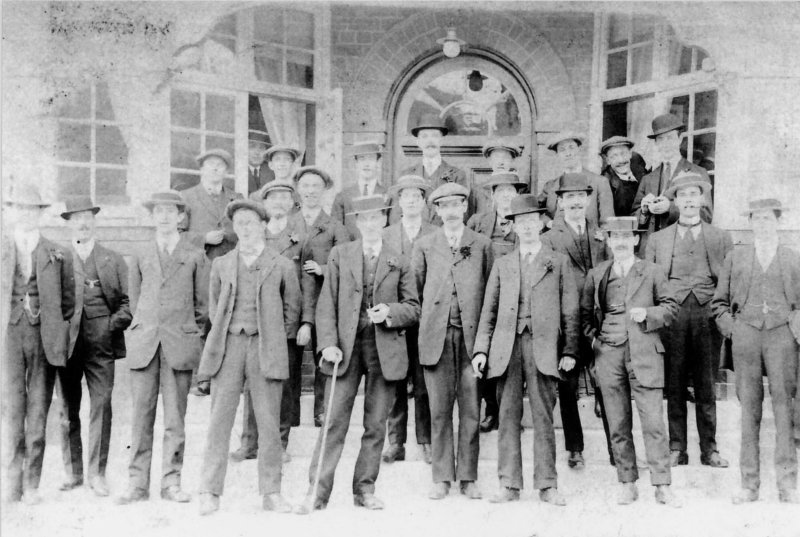
An unknown group of revellers, many wearing carnations, meeting outside the new Greyhound Inn c.1910 (could it be re-opening day?) The hats giving a clear indication of the mixing of social status and occupation At the end of the war the Greyhound hosted what was probably the most imortant event since the turn of the century, as all the men returning home were given gold medals by the people of the village and to the families of those who would not be returning. this medal was a token of thanks, and has become very rare. In fact, out of around one hundred awarded, only one is still known to exist, owned by David Evans of Holt, which was given to his grandfather, Private 45685 Robert Davies Evans of Crewe Lane, Farndon, born in 1895, who served with the 3rd Cheshire Regiment, and later as Private 64826 in the Machine Gun Corps. A special evening was organised to formally thank the men and to present their pendants, as this news article reveals;
It should be noted that the licensee was no longer Mr Chesterton, but Miss Jones, which was rather unusual given the attitudes by those granting licences. Yet wartime saw great social change regarding the role of women. In the years before the war, women were traditionally confined to domestic roles, either in their own home or in service. In Britain, out of approximately 24 million adult women, around 1.7 million worked in domestic service, 1.4 million in textiles and clothing industries, 500,000 worked in commerce, and 260,000 worked in local and national government, including teaching, all of which were then clearly regarded as ‘women’s work’. But with millions of men now engaged in the conflict, there was a desperate shortage of labour at home in all fields of work, from industry to agriculture to city offices. Consequently, women were increasingly called upon to fill those roles. From the early stages of the war, thousands of women across the country began to heed the call and took up jobs in munitions factories, offices, aircraft factories, civil service, docklands, tramways, the Post Office and farms, and a variety of other positions traditionally looked upon as ‘men’s work’. One of the largest influxes of women into the workplace was in the transport industry where they took on work as conductresses (and sometimes, as drivers), on buses, trams and underground trains. Total numbers for the Farndon area are unknown, but unemployment was high, and women had long been discouraged from applying for local jobs which could be taken by a man. Women were already employed on local farms, but it was in jobs such as running the high street pub where attitudes of the local police came to the fore when faced with the prospect of a female licencee. Objections were raised to the licence transfer, dismissing Emily Jones’ references detailing her immediate past, declaring they still didn’t know enough about her,
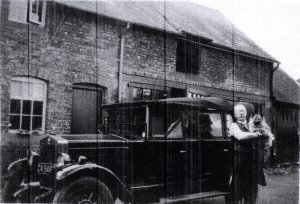 In 1929 Edward Alexander Loughlin took over the tenancy. Born in Liverpool, Edward was a seafaring man spending many years in the Merchant Navy working as Chief Steward for Booth Line and Blue Funnel. He was also deployed on the convoys during WW1 and was awarded the Mercantile Marine Medal and the British War Medal. Coming ashore he had taken on the tenancy of the Fleece Hotel in 22 Hope Street in the centre of Wrexham with his wife Isabella, before moving to Farndon, with their sons Edward, Leslie Joseph and Colin. Their sons had been well educated, having attended Merchant Taylor's school in Crosby, followed by Grove Grammar School on their move to Wrexham.
In 1929 Edward Alexander Loughlin took over the tenancy. Born in Liverpool, Edward was a seafaring man spending many years in the Merchant Navy working as Chief Steward for Booth Line and Blue Funnel. He was also deployed on the convoys during WW1 and was awarded the Mercantile Marine Medal and the British War Medal. Coming ashore he had taken on the tenancy of the Fleece Hotel in 22 Hope Street in the centre of Wrexham with his wife Isabella, before moving to Farndon, with their sons Edward, Leslie Joseph and Colin. Their sons had been well educated, having attended Merchant Taylor's school in Crosby, followed by Grove Grammar School on their move to Wrexham.
(Right) Edward Alexander Loughlin pictured in the rear of the Greyhound in front of the barn c.1931 His time in the village was short as he passed away in 1934, but made quite an impression on his time at the Greyhound, becoming committed to Farndon life and its people. 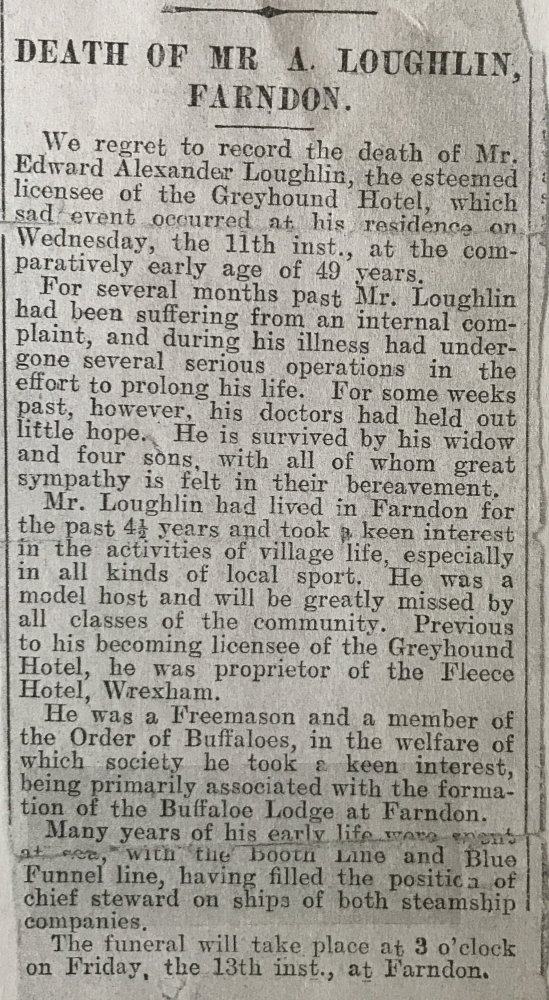
Many thanks to Pat Brookes (nee Loughlin), daughter of Edward Loughlin jr, for the Loughlin family photos and cuttings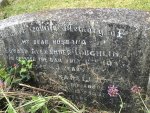 The resting place of Edward and Isabella Loughlin, St Chad's Churchyard
The resting place of Edward and Isabella Loughlin, St Chad's ChurchyardPilot Officer Colin Douglas Loughlin RAFVR1913-1941
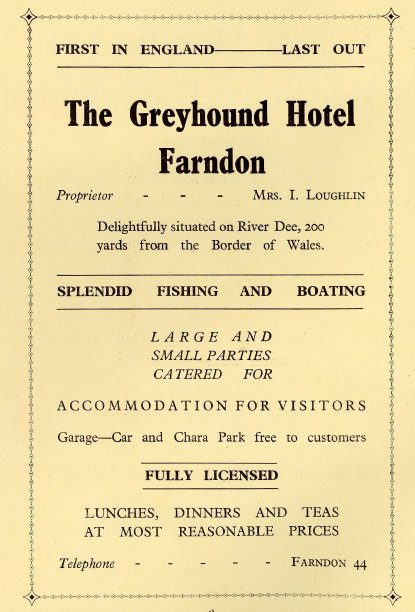
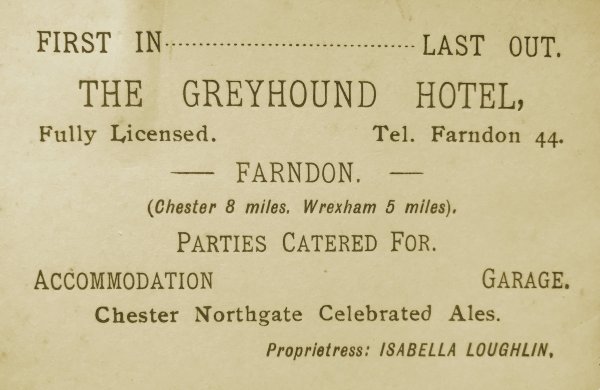 Advert and card c.1935
Advert and card c.1935
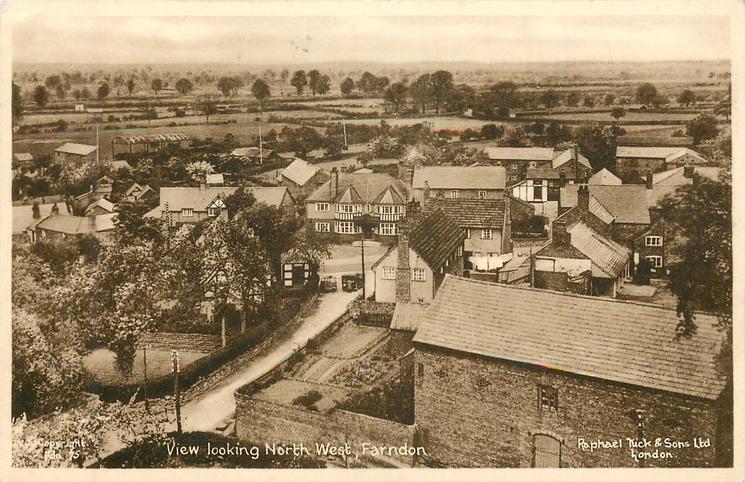 Greyhound and village from the church tower 1950s
Greyhound and village from the church tower 1950s
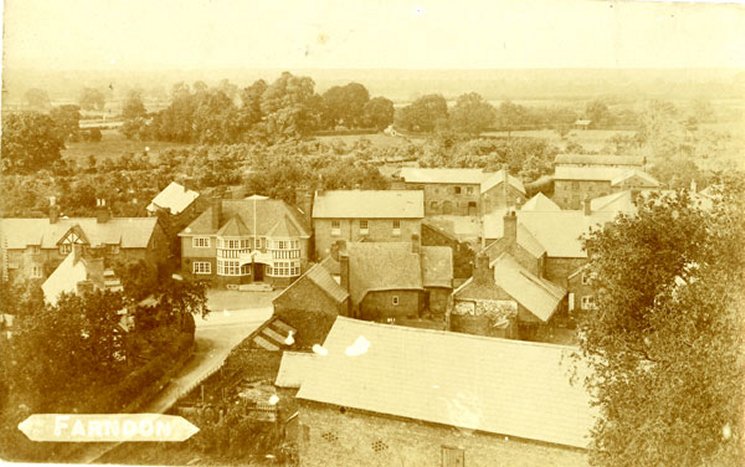 Greyhound and village from the church tower 1950s
Greyhound and village from the church tower 1950s
|
|
The Hare at Farndon
|
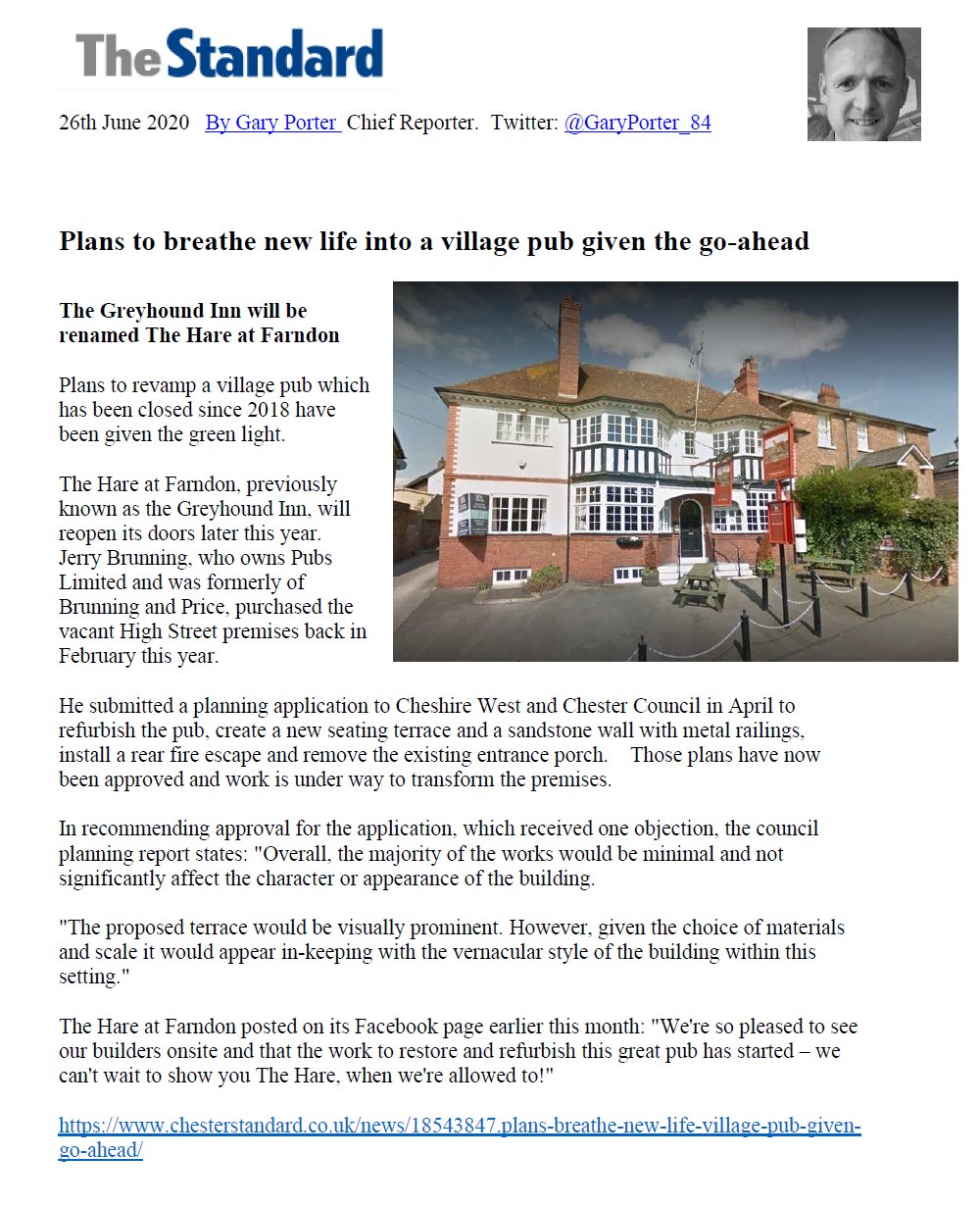

Artist image of The Hare at Farndon


Artist image of The Hare at Farndon

The work begins

Refurb plans

Gutting the interior

Gutting the interior

Gutting the interior

Gutting the interior

Gutting the interior

Gutting the interior

Gutting the interior

Gutting the interior

Rear of the building before refurbishment

Laying the new patio

Removal of the front porch

New entrance

New front door

Front renovation

Front renovation

Front patio completed

Completed interior

Completed interior

Completed interior

Completed interior - upstairs meeting room

Ready for customers


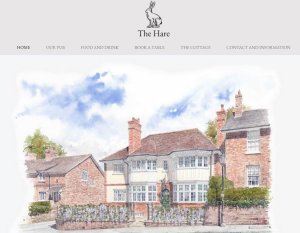
|
|
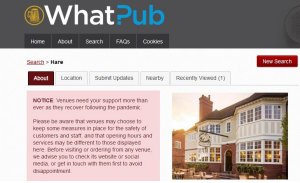
|
|
|
The Cottage
|
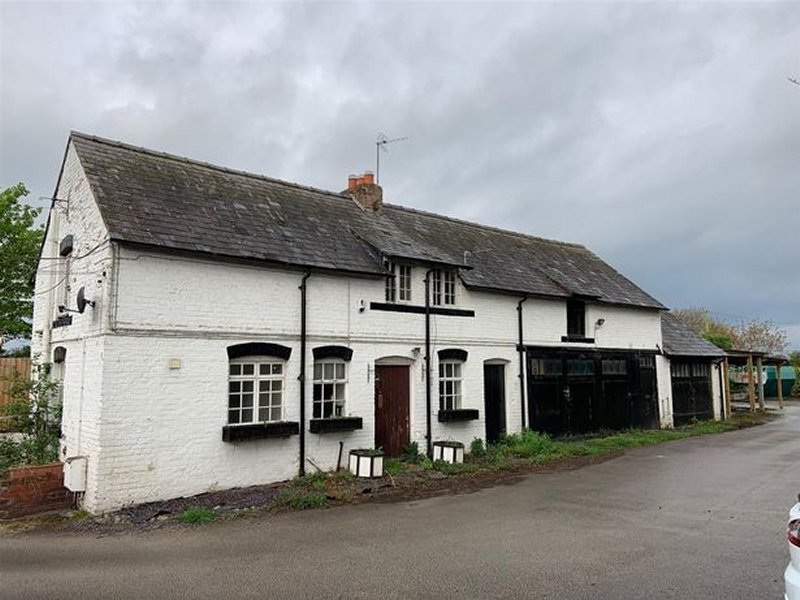
Barn and outbuildings prior to conversion
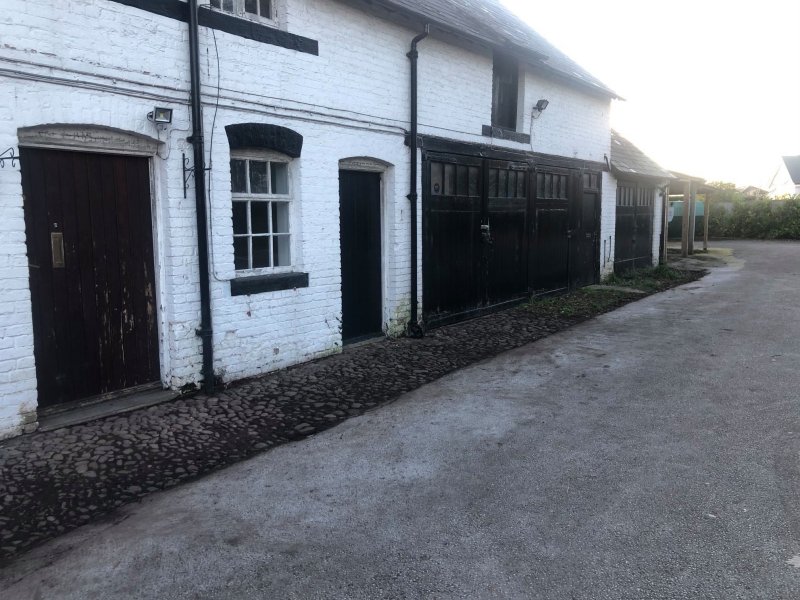
Barn and outbuildings prior to conversion
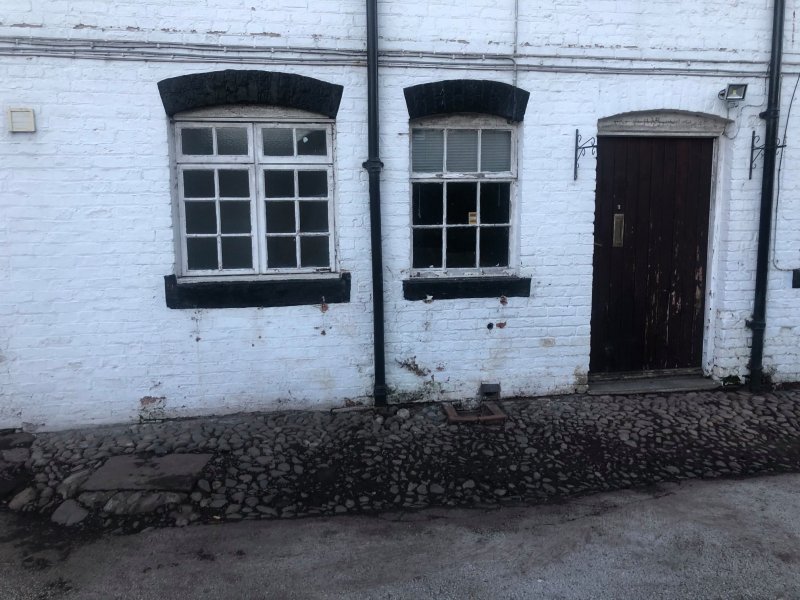
Barn and outbuildings prior to conversion
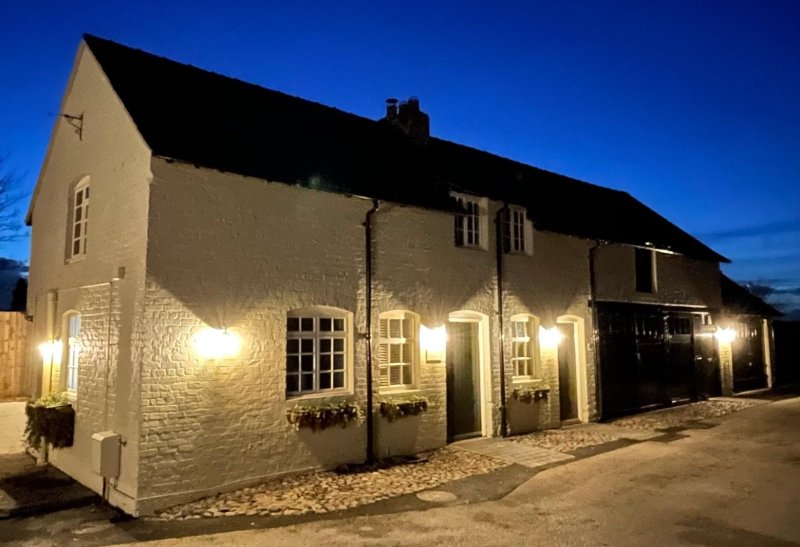
The Cottage completed

|
See website for full details |
|
A Chronology of Sources
|
 1735 map
1735 map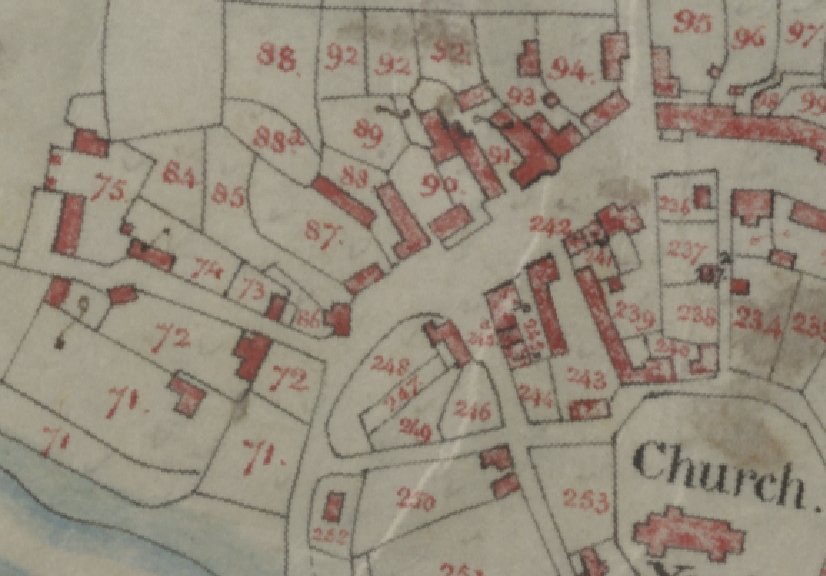 Tithe Map 1840 plot
Tithe Map 1840 plot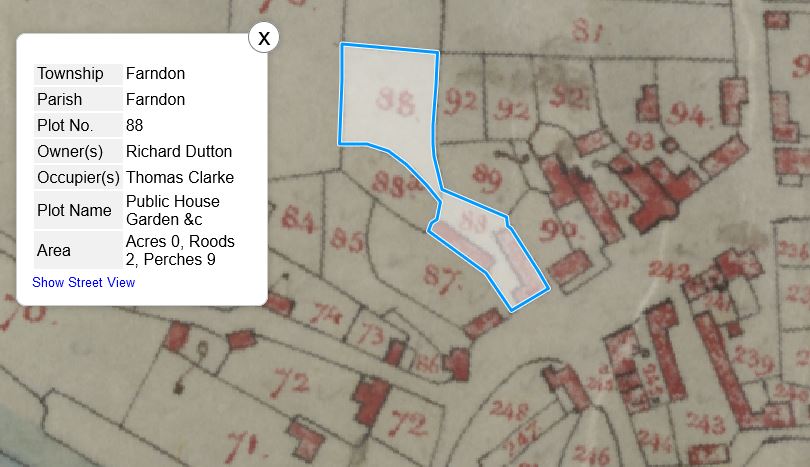 Tithe Map 1840 plot 88
Tithe Map 1840 plot 88 Confirmed by the 1841 Census - Thomas Clarke, publican
Confirmed by the 1841 Census - Thomas Clarke, publican
 1851 Census - Thomas Townsend, Innkeeper
1851 Census - Thomas Townsend, Innkeeper
 1861 Census - Thomas Townsend, Joiner, Publican, Farmer
1861 Census - Thomas Townsend, Joiner, Publican, Farmer
 1871 Census - Abraham Thomas - Publican
1871 Census - Abraham Thomas - Publican

 1891 Census - Matthew Barrow, Licenced Pub Victualler
1891 Census - Matthew Barrow, Licenced Pub Victualler
 Map of 1897
Map of 1897
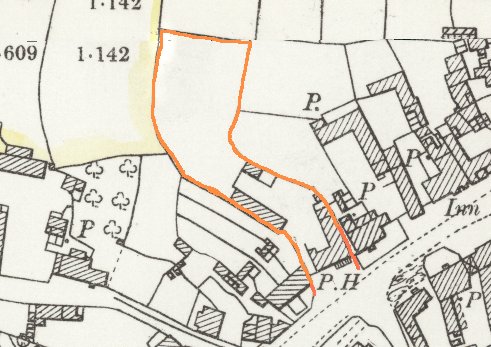 Map of 1897 Greyhound and plot close-up
Map of 1897 Greyhound and plot close-up
 1901 Census - John Fleet, Hotel Keeper
1901 Census - John Fleet, Hotel Keeper
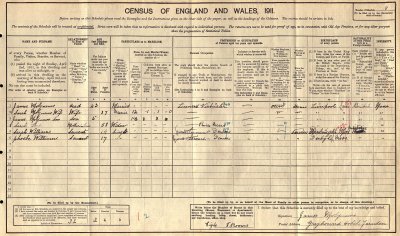 1911 Census - James Molyneux, Licensed victualler
1911 Census - James Molyneux, Licensed victualler The 1939 Census - Leslie A. Loughlin - Licensed victualler
The 1939 Census - Leslie A. Loughlin - Licensed victualler
Return to Village Buildings page
www.roydenhistory.co.uk
Visit the Royden History Index Page listing web sites designed and maintained by Mike Royden
No pages may be reproduced without permission
copyright Mike Royden
All rights reserved